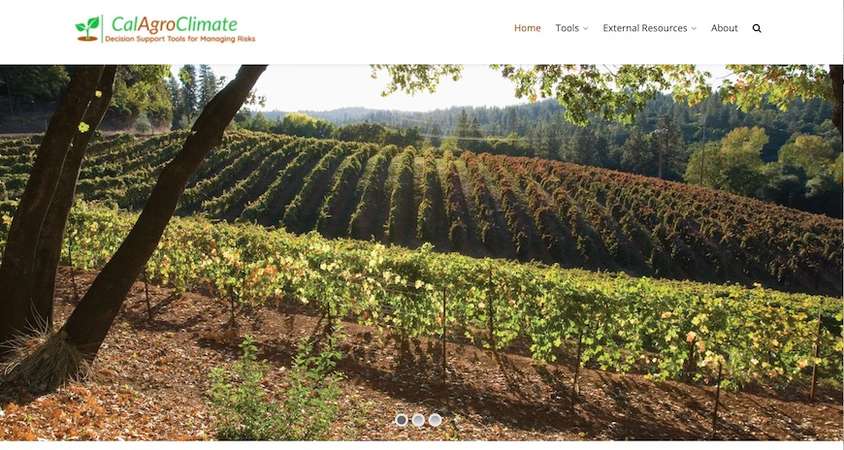
When planting crops, farmers confront numerous questions. Among them: Will it get too hot? Is it likely frost will stunt growing? When is the best time to plant? What kind of pests could impact the harvest?
UC Cooperative Extension climate adaptation specialist at UC Merced Tapan Pathak has helped develop an online tool to swiftly answer these questions and help farmers make decisions in real time. Pathak worked with the U.S. Department of Agriculture, California Climate Hub, UC Cooperative Extension and UC Agriculture and Natural Resources' Informatics and Geographic Information Systems (or UC ANR IGIS) to launch CalAgroClimate, a free resource for farmers.
“Our hope is to make CalAgroClimate a one-stop shop for farmers and technical service providers to obtain ag-relevant climate and weather information, as well as resources for adapting to current and future climate risks,” Pathak said. “Additionally, we are using gridded data called PRISM 800, which provides gridded weather information at much finer resolution (800 meter), compared to other coarser resolution.”
Growers and others can use CalAgroClimate's crop and location-specific tools and resources to help them prepare for frost or untimely rain and take advantage of expected favorable conditions.
CalAgroClimate includes tools for heat advisory, frost advisory, pest advisory and crop phenology, or development stages of crop growth from planting to harvest.
The site was inspired by a system developed in the southeast called agroclimate.org, Pathak said. “Although the idea originated from that system, we ended up designing tools that were more specific to California … In California, we have so much crop diversity and we are working to make this system comprehensive and unique.”
Getting the website to the launch stage took some time.
“It took three to four years in planning, designing and development of this first set of tools,” Pathak said.
Among the first suite of tools: information on frost protection, mitigating effects of heatwaves during summer, tracking crop growth during the season and keeping track of current year compared to historical years, as well as keeping track of pest development and number of generations to decide when to implement integrated pest management practices.
The website isn’t finished yet and the creators plan to work with farmers to determine what other information to add to the site.
“We do have ideas for new tools, but we would like to prioritize based on the needs of agricultural stakeholders,” Pathak said. “At the same time, we are also planning to keep modifying the existing tools based on the suggestions from experts and stakeholders.”
Shane Feirer and Robert Johnson of UC ANR IGIS designed the interactive tools on the website, Steven Ostoja of the USDA Climate Hub co-led this effort with Pathak and Lauren Parker contributed to content organization, according to a story by UC ANR. An advisory panel composed of colleagues from the University of California Cooperative Education and the Natural Resources Conservation Service oversees the site.
“CalAgroClimate is an amazing new tool that puts comprehensive past and forecast weather data at any grower's disposal,” Mark Battany, UC Cooperative Extension water management and biometeorology advisor for San Luis Obispo and Santa Barbara counties, said in the UC ANR story. “California's high-value crops are subject to a myriad of weather-related risk factors; this tool will allow growers to better address both near-term and long-term risks, and in the end grow more profitably.”




 Public Information Officer
Public Information Officer

